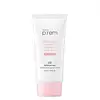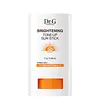What's inside
What's inside
 Key Ingredients
Key Ingredients

 Benefits
Benefits

 Concerns
Concerns

No concerns
 Ingredients Side-by-side
Ingredients Side-by-side

Water
Skin ConditioningZinc Oxide
Cosmetic ColorantCyclohexasiloxane
EmollientCaprylyl Methicone
Skin ConditioningButyloctyl Salicylate
Skin ConditioningPropanediol
SolventPropylheptyl Caprylate
EmollientPolyglyceryl-3 Polydimethylsiloxyethyl Dimethicone
Skin ConditioningDicaprylyl Carbonate
EmollientNiacinamide
SmoothingMethyl Trimethicone
Skin ConditioningCalamine
AbsorbentMethyl Methacrylate Crosspolymer
Pyrus Communis Fruit Extract
Skin ConditioningPrunus Persica Fruit Extract
AbrasiveAvena Sativa Kernel Extract
AbrasiveCynara Scolymus Leaf Extract
Skin ConditioningCucumis Melo Fruit Extract
Skin ConditioningHedera Helix Leaf/Stem Extract
AntimicrobialFicus Carica Fruit Extract
HumectantCentella Asiatica Extract
CleansingMoringa Oleifera Seed Extract
Skin ConditioningCardiospermum Halicacabum Flower/Leaf/Vine Extract
Skin ConditioningRosmarinus Officinalis Leaf Extract
AntimicrobialRosa Damascena Flower Water
MaskingSodium Hyaluronate
HumectantJasminum Officinale Flower Water
MaskingCamellia Sinensis Leaf Water
MaskingHydrogenated Lecithin
EmulsifyingRibes Nigrum Seed Oil
EmollientHelianthus Annuus Seed Oil
EmollientDisteardimonium Hectorite
StabilisingMagnesium Sulfate
Triethoxycaprylylsilane
Panthenol
Skin ConditioningLauryl Polyglyceryl-3 Polydimethylsiloxyethyl Dimethicone
Skin ConditioningPolyglyceryl-2 Dipolyhydroxystearate
Skin ConditioningPolymethylsilsesquioxane
Methylpropanediol
SolventGlycerin
HumectantGlyceryl Caprylate
EmollientCaprylyl Glycol
EmollientEthylhexylglycerin
Skin ConditioningAdenosine
Skin ConditioningPolyquaternium-51
Skin ConditioningBeta-Glucan
Skin ConditioningCyanocobalamin
Skin ConditioningTocopherol
AntioxidantButylene Glycol
HumectantHydrolyzed Hyaluronic Acid
HumectantOctyldodecanol
EmollientMaltodextrin
AbsorbentCeramide NP
Skin ConditioningCitric Acid
BufferingHelianthus Annuus Seed Oil Unsaponifiables
EmollientWater, Zinc Oxide, Cyclohexasiloxane, Caprylyl Methicone, Butyloctyl Salicylate, Propanediol, Propylheptyl Caprylate, Polyglyceryl-3 Polydimethylsiloxyethyl Dimethicone, Dicaprylyl Carbonate, Niacinamide, Methyl Trimethicone, Calamine, Methyl Methacrylate Crosspolymer, Pyrus Communis Fruit Extract, Prunus Persica Fruit Extract, Avena Sativa Kernel Extract, Cynara Scolymus Leaf Extract, Cucumis Melo Fruit Extract, Hedera Helix Leaf/Stem Extract, Ficus Carica Fruit Extract, Centella Asiatica Extract, Moringa Oleifera Seed Extract, Cardiospermum Halicacabum Flower/Leaf/Vine Extract, Rosmarinus Officinalis Leaf Extract, Rosa Damascena Flower Water, Sodium Hyaluronate, Jasminum Officinale Flower Water, Camellia Sinensis Leaf Water, Hydrogenated Lecithin, Ribes Nigrum Seed Oil, Helianthus Annuus Seed Oil, Disteardimonium Hectorite, Magnesium Sulfate, Triethoxycaprylylsilane, Panthenol, Lauryl Polyglyceryl-3 Polydimethylsiloxyethyl Dimethicone, Polyglyceryl-2 Dipolyhydroxystearate, Polymethylsilsesquioxane, Methylpropanediol, Glycerin, Glyceryl Caprylate, Caprylyl Glycol, Ethylhexylglycerin, Adenosine, Polyquaternium-51, Beta-Glucan, Cyanocobalamin, Tocopherol, Butylene Glycol, Hydrolyzed Hyaluronic Acid, Octyldodecanol, Maltodextrin, Ceramide NP, Citric Acid, Helianthus Annuus Seed Oil Unsaponifiables
Zinc Oxide
Cosmetic ColorantButylene Glycol Dicaprylate/Dicaprate
EmollientC12-15 Alkyl Benzoate
AntimicrobialHexyl Laurate
EmollientNeopentyl Glycol Diheptanoate
EmollientOctyldodecanol
EmollientSilica
AbrasiveDibutyl Lauroyl Glutamide
Skin ConditioningPentaerythrityl Tetra-Di-T-Butyl Hydroxyhydrocinnamate
AntioxidantDipentaerythrityl Hexahydroxystearate/Hexastearate/Hexarosinate
Skin ConditioningPolyamide-8
EmollientDibutyl Ethylhexanoyl Glutamide
Skin ConditioningMica
Cosmetic ColorantTitanium Dioxide
Cosmetic ColorantPolyhydroxystearic Acid
EmulsifyingTriethoxycaprylylsilane
Polyglyceryl-4 Isostearate
Emulsifying1,2-Hexanediol
Skin ConditioningNeopentyl Glycol Diethylhexanoate
EmollientEthylhexylglycerin
Skin ConditioningCI 77492
Cosmetic ColorantAluminum Hydroxide
EmollientCI 77491
Cosmetic ColorantCalamine
AbsorbentRuby Powder
Skin ConditioningWater
Skin ConditioningAscorbic Acid
AntioxidantNiacinamide
SmoothingPinus Pinaster Bark Extract
AntioxidantCaesalpinia Spinosa Fruit Extract
Skin ProtectingPanthenol
Skin ConditioningPropanediol
SolventButylene Glycol
HumectantKappaphycus Alvarezii Extract
Skin ConditioningBuddleja Officinalis Flower Extract
UV FilterOenothera Biennis Flower Extract
AstringentPueraria Lobata Root Extract
HumectantPinus Palustris Leaf Extract
TonicUlmus Davidiana Root Extract
Skin ConditioningZinc Oxide, Butylene Glycol Dicaprylate/Dicaprate, C12-15 Alkyl Benzoate, Hexyl Laurate, Neopentyl Glycol Diheptanoate, Octyldodecanol, Silica, Dibutyl Lauroyl Glutamide, Pentaerythrityl Tetra-Di-T-Butyl Hydroxyhydrocinnamate, Dipentaerythrityl Hexahydroxystearate/Hexastearate/Hexarosinate, Polyamide-8, Dibutyl Ethylhexanoyl Glutamide, Mica, Titanium Dioxide, Polyhydroxystearic Acid, Triethoxycaprylylsilane, Polyglyceryl-4 Isostearate, 1,2-Hexanediol, Neopentyl Glycol Diethylhexanoate, Ethylhexylglycerin, CI 77492, Aluminum Hydroxide, CI 77491, Calamine, Ruby Powder, Water, Ascorbic Acid, Niacinamide, Pinus Pinaster Bark Extract, Caesalpinia Spinosa Fruit Extract, Panthenol, Propanediol, Butylene Glycol, Kappaphycus Alvarezii Extract, Buddleja Officinalis Flower Extract, Oenothera Biennis Flower Extract, Pueraria Lobata Root Extract, Pinus Palustris Leaf Extract, Ulmus Davidiana Root Extract
Ingredients Explained
These ingredients are found in both products.
Ingredients higher up in an ingredient list are typically present in a larger amount.
Butylene Glycol (or BG) is used within cosmetic products for a few different reasons:
Overall, Butylene Glycol is a safe and well-rounded ingredient that works well with other ingredients.
Though this ingredient works well with most skin types, some people with sensitive skin may experience a reaction such as allergic rashes, closed comedones, or itchiness.
Learn more about Butylene GlycolWe don't have a description for Calamine yet.
Ethylhexylglycerin (we can't pronounce this either) is commonly used as a preservative and skin softener. It is derived from glyceryl.
You might see Ethylhexylglycerin often paired with other preservatives such as phenoxyethanol. Ethylhexylglycerin has been found to increase the effectiveness of these other preservatives.
Niacinamide is a multitasking form of vitamin B3 that strengthens the skin barrier, reduces pores and dark spots, regulates oil, and improves signs of aging.
And the best part? It's gentle and well-tolerated by most skin types, including sensitive and reactive skin.
You might have heard of "niacin flush", or the reddening of skin that causes itchiness. Niacinamide has not been found to cause this.
In very rare cases, some individuals may not be able to tolerate niacinamide at all or experience an allergic reaction to it.
If you are experiencing flaking, irritation, and dryness with this ingredient, be sure to double check all your products as this ingredient can be found in all categories of skincare.
When incorporating niacinamide into your routine, look out for concentration amounts. Typically, 5% niacinamide provides benefits such as fading dark spots. However, if you have sensitive skin, it is better to begin with a smaller concentration.
When you apply niacinamide to your skin, your body converts it into nicotinamide adenine dinucleotide (NAD). NAD is an essential coenzyme that is already found in your cells as "fuel" and powers countless biological processes.
In your skin, NAD helps repair cell damage, produce new healthy cells, support collagen production, strengthen the skin barrier, and fight environmental stressors (like UV and pollution).
Our natural NAD levels start to decline with age, leading to slower skin repair, visible aging, and a weaker skin barrier. By providing your skin niacinamide, you're recharging your skin's NAD levels. This leads to stronger, healthier, and younger looking skin.
Another name for vitamin B3 is nicotinamide. This vitamin is water-soluble and our bodies don't store it. We obtain Vitamin B3 from either food or skincare. Meat, fish, wheat, yeast, and leafy greens contain vitamin B3.
The type of niacinamide used in skincare is synthetically created.
Learn more about NiacinamideOctyldodecanol is a fatty alcohol. It is primarily used to enhance the texture of products.
As an emulsifier, Octyldodecanol helps prevent the oils and waters from separating. It also prevents ingredients from creating foam when shaken.
Octyldodecanol is created by reducing fatty acid to an alcohol.
Due to its high molecular weight, it does not get absorbed into the skin.
Learn more about OctyldodecanolPanthenol is a common ingredient that helps hydrate and soothe the skin. It is found naturally in our skin and hair.
There are two forms of panthenol: D and L.
D-panthenol is also known as dexpanthenol. Most cosmetics use dexpanthenol or a mixture of D and L-panthenol.
Panthenol is famous due to its ability to go deeper into the skin's layers. Using this ingredient has numerous pros (and no cons):
Like hyaluronic acid, panthenol is a humectant. Humectants are able to bind and hold large amounts of water to keep skin hydrated.
This ingredient works well for wound healing. It works by increasing tissue in the wound and helps close open wounds.
Once oxidized, panthenol converts to pantothenic acid. Panthothenic acid is found in all living cells.
This ingredient is also referred to as pro-vitamin B5.
Learn more about PanthenolPropanediol is an all-star ingredient. It softens, hydrates, and smooths the skin.
It’s often used to:
Propanediol is not likely to cause sensitivity and considered safe to use. It is derived from corn or petroleum with a clear color and no scent.
Learn more about PropanediolTriethoxycaprylylsilane is a silicone used to bind and stabilize ingredients.
As an emulsifier, it helps prevent ingredients from separating. This can help elongate the shelf life of products.
Triethoxycaprylylsilane is often used to coat mineral sunscreens ingredients to help give a better feel. It also helps reduce oxidative stress in sunscreens.
Learn more about TriethoxycaprylylsilaneWater. It's the most common cosmetic ingredient of all. You'll usually see it at the top of ingredient lists, meaning that it makes up the largest part of the product.
So why is it so popular? Water most often acts as a solvent - this means that it helps dissolve other ingredients into the formulation.
You'll also recognize water as that liquid we all need to stay alive. If you see this, drink a glass of water. Stay hydrated!
Learn more about WaterZinc Oxide is a mineral broad-spectrum UV filter; it is the broadest UVA and UVB reflector approved by the FDA. It also has skin protectant and skin soothing properties.
Zinc oxide is one of the most effective broad-spectrum UV filters. It protects against UVB, UVAII, and UVAI. In comparison to its counterpart titanium dioxide, zinc oxide provides uniform and extended UVA protection.
Another great benefit? This ingredient is highly photostable so it won't degrade easily under sunlight.
A common myth is that mineral UV filters are widely believed to primarily reflect UV light.
However, modern research shows titanium dioxide absorbs UV radiation like chemical filters (~95% absorption & 5% reflection).
Zinc oxide has great skin soothing properties so you'll likely find this in sunscreens formulated for sensitive skin or babies/children. It is unlikely to cause "eye sting" like other sunscreen ingredients.
Regulatory agencies consider zinc oxide to be non-toxic and safe. It has also been shown to not penetrate the skin.
Unfortunately, this ingredient does leave a visible white cast. This is why mineral sunscreens are often less cosmetically elegant than chemical or hybrid ones.
In cosmetics, zinc oxide can be found in both non-nano and nano-sized forms. The nano version is used to reduce white cast and improve the texture of sunscreen formulas.
There are ongoing concerns surrounding nano-zinc oxide's impact on marine ecosystems and whether it can be absorbed into skin.
Regarding marine ecosystems and coral reefs, there is no conclusive evidence that any form of zinc oxide (or any other sunscreen ingredients) will cause harm. The science is still developing but many consumers are keeping a close eye on this issue.
Please note, many destinations have reef-safety sunscreen rules. For instance, the U.S. Virgin Islands advises all visitors to use non-nano mineral sunscreens.
There has also been some stir about whether micronized or nano zinc oxide has potential photoxicity and absorption through the skin/lungs.
An in-vitro (done in a test tube or petri dish) study demonstrated micronized zinc oxide to have potential phototoxicity. There's no need to fret; the EU Commission's Scientific Committee on Consumer Safety has stated, "The relevance of these findings needs to be clarified by appropriate investigations in vivo." Or in other words, further studies done on living organisms are needed to prove this.
Current research shows zinc oxide nanoparticles do not penetrate intact or sunburned skin. They either remain on the surface or in the outermost layer of dead skin (stratum corneum).
Zinc oxide is one of only two classified mineral UV filters with titanium dioxide being the other one.
Fun fact: Zinc has been used throughout history as an ingredient in paint and medicine. An Indian text from 500BC is believed to list zinc oxide as a salve for open wound. The Ancient Greek physician Dioscorides has also mentioned the use of zinc as an ointment in 1AD.
Learn more about Zinc Oxide